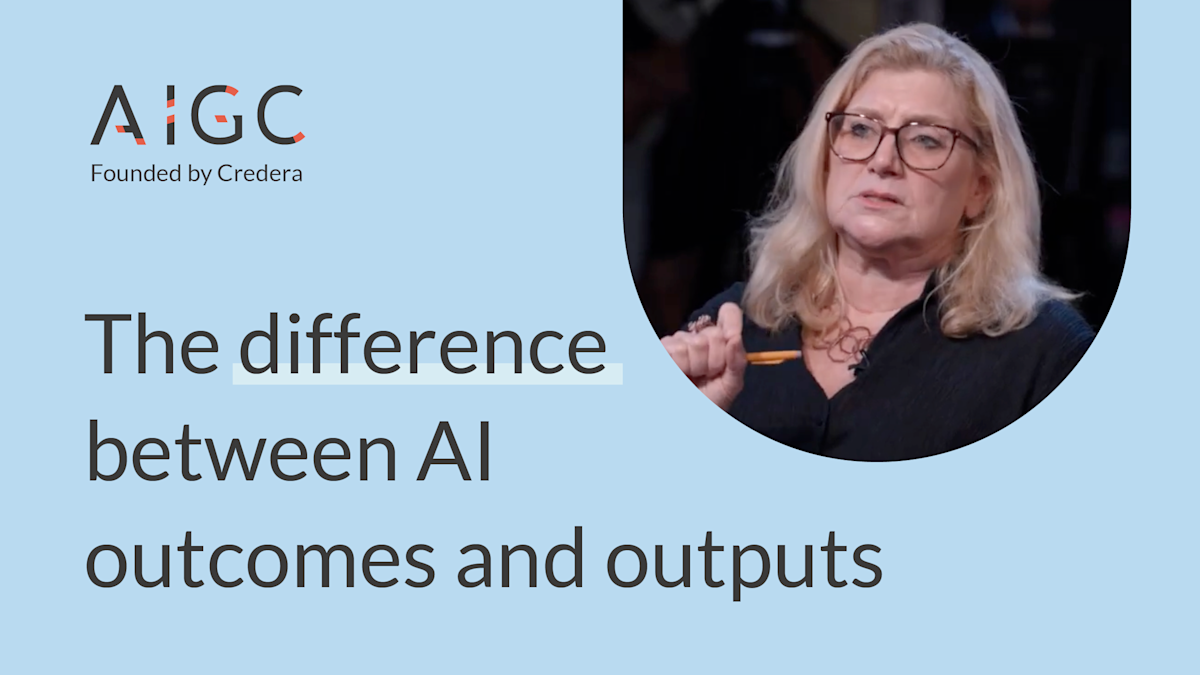AI
Nov 30, 2023
From the AI Global Council: Understanding the difference between AI outputs and outcomes

The AI Global Council is an interdisciplinary collective of thought leaders from a vast array of backgrounds, formed in response to the rapidly increasing opportunities and challenges artificial intelligence (AI) presents to leaders and their organizations.
In the Council’s inaugural meeting, one focus was on the pertinent questions leaders should be asking when considering the application of AI to their organization’s functions. For all that has been discovered, AI still operates in an ambiguous and complex space. Knowing this, how can leaders ensure the solutions AI generates for their organizations are effective and accurate?
Making the distinction between outputs and outcomes
As the Council discussed ways leaders can engage with AI, JoAnn Stonier, chief data officer at Mastercard, brought up a key area of attention: the distinction between outputs and outcomes. Processes give outputs, but do they lead to the right outcomes?
Stonier emphasized the need for organizations to create closed feedback loops that allow them to ensure the outcomes derived from AI-based outputs align with their business interests. Throughout the feedback loop, organizations should evaluate not just the obvious outcomes from their outputs, but also think critically about the risks and opportunities that have yet to appear.
Furthermore, leaders must appraise the sensitivity that exists between AI outcomes and the greater context of their organizations. AI is largely a reflection of the data that feeds it, and while this data may be incredibly precise, ambiguity can still be found throughout its implementation.
While examining their feedback loops, Stonier noted that organizations may need to evaluate whether a different set of outputs may need to be applied to lead to more accurate and predictive outcomes. The creation of governance cycles, which can add checks to the feedback loop from start to finish, can greatly aid in guiding organizations toward better defined outputs, and thus, better defined business outcomes.
Watch the full clip here.
AI in organizations
Being trustworthy stewards of AI requires leaders to question their understanding of AI and the role AI has in their organizations. The distinction between outputs and outcomes is just one of many key areas the Council highlights for leaders to contemplate when considering AI implementation. While AI presents many areas of excitement for organizations, this excitement must be paired with critical conversations about what exactly AI can and should look like for an organization’s specific needs.
As a broader part of this conversation, the AI Global Council explores eight other questions leaders should be asking themselves and their teams in order to avoid pitfalls when interacting with AI.
Explore more about the AI Global Council
The AI Global Council serves as a forum composed of experts, policymakers, academics, and industry leaders who engage in pressing conversations about the amorphous reality of AI, and how it is shaping the world. For more information about the Council, and to stay connected to their work, follow along on LinkedIn or reach out at marketing@credera.com.
Contact Us
Let's talk!
We're ready to help turn your biggest challenges into your biggest advantages.
Searching for a new career?
View job openings

